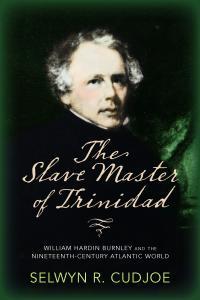Honouring our heroes
By Selwyn Cudjoe
October 30, 2024
Speaking to hundreds of people at Progress Park, Grenada, on October 19, Prime Minister Dickon Mitchell announced plans “to build a shrine at Fort George to honour deceased Revolutionary leader Prime Minster Maurice Bishop and others who lost their lives on October 19, 1983, as a result of internal conflicts between different factions of the Revolutionary Government”.
Although I welcome this gesture, I immediately became suspicions. A “shrine” sounded too much as the canonisation of the brother.
On Thursday I had travelled to Grenada to attend a reunion ceremony of family members. On Friday I attended a “National Ecumenical Service of Thanksgiving” at the historic St Andrew’s Scots Kirk Presbyterian Church (built in 1831-33) to thank the Americans for their invasion to quell the chaos that took place after Bishop’s death. The invasion shocked progressive elements in the Caribbean and the US.
Many of Grenada’s leaders (Keith Mitchell, Leader of the Opposition, the Prime Minister, Her Excellency, the Governor General, Dame Cecile La Grenade) lent their dignity to the occasion. Other distinguished guests included Bishop Clyde Harvey, chairman of the Conference of Churches in Grenada (CCG); Tillman Thomas, former prime minister, and Rev Cornelius Matthias Harry, Superintendent Minister of the Methodist Church who offered the benediction.
I was happy to see Bishop Harvey who brought greetings from the CCG. I attended his ordination as the Bishop of Grenada in 2017. I was also pleased to see Thomas who I taught at Fordham University during the late 1960s. He reminded me that he loved my course, “Four Revolutionary Writers: Frantz Fanon, Malcolm X, Kwame Nkrumah, and Eric Williams”, that he took when he was there. He said it was the best course he took at Fordham.
I wanted to hear Thomas’ thoughts about the time when Bishop’s People’s Revolutionary Government (PRG) placed him under house arrest in July 1981 for counter-revolutionary activities for publishing the Grenada Voice newspaper. He was released in 1983 when the US invaded Grenada.
He insists that the American intervention (his word) restored democratic institutions to Grenada, which he says had fallen apart completely after Bishop’s death.
This was Thomas’ angle of vision of the revolution. The Americans had a different take on it. The New York Times reported: “President [Ronald] Reagan announced he had ordered the invasion of Grenada by nearly 1,900 Marines and Army airborne troops to protect United States citizens and to help restore democratic institutions in the Caribbean island.” (October 26, 1983.)
The US, he said, “had no choice but to act strongly to oppose a brutal gang of leftist thugs” that violently seized power on October 12. The latter executed the ousted Prime Minister and other Cabinet members.
Restoring democratic institutions did not seem to be the major motive of the US. They claimed that US medical students at the St George’s School of Medicine were in danger so they had to invade the island.
The New York Times reported: “Two weeks of terror were described by scores of American students evacuated from Grenada. With tears and expressions of relief, the students praised the Reagan Administration and American invasion forces for bringing them safely away.” (October 28, 1983.)
Many of the Caribbean leaders, with the possible exception of Forbes Burnham of Guyana and Michael Manley of Jamaica, openly disliked PRG’s Marxist orientation. They feared that PGR’s Marxist “infection” would spill over and infect their countries, endangering the longevity of their own rule. The US invasion removed a big burden off their shoulders.
St Andrew’s Scots Kirk Presbyterian Church stands on the lower elevation to the north of Fort George. After the service I visited the house on Mount Wheldale Hill from which Bishop was taken and executed at Fort George.
Today, the Grenada Parliamentary Building stands in front of that house where Bishop was executed. It is covered with vines, parasitic vegetation, and an overgrowth of trees. It’s a permanent eyesore. On the other hand, the government is busy refurbishing Fort George to attract tourists and remind its people of the atrocity that took place on October 19, 1983.
It is this US intervention/invasion which the CCG celebrated on Friday. In stark contrast to the Marxist ideology of the PRG government, this service was given over entirely to a Christian order of things.
The recessional hymn embodied the new attitude: “Now thank we all our God/ with heart and hands and voices,/ who wondrous things has done,/ in whom his world rejoices;/ who from our mothers’ arms/ has blessed us on our way/ with countless gifts of love, and still is ours today.”
Let us hope that this sense of ecumenism will erase the stain from this dark period of Grenada’s history and allow its people to move into a new day of renewed hope.
—Prof Cudjoe's e-mail address is scudjoe@wellesley.edu. He can be reached @ProfessorCudjoe.
Share your views here...

The Slave Master of Trinidad by Dr. Selwyn R. Cudjoe
|

